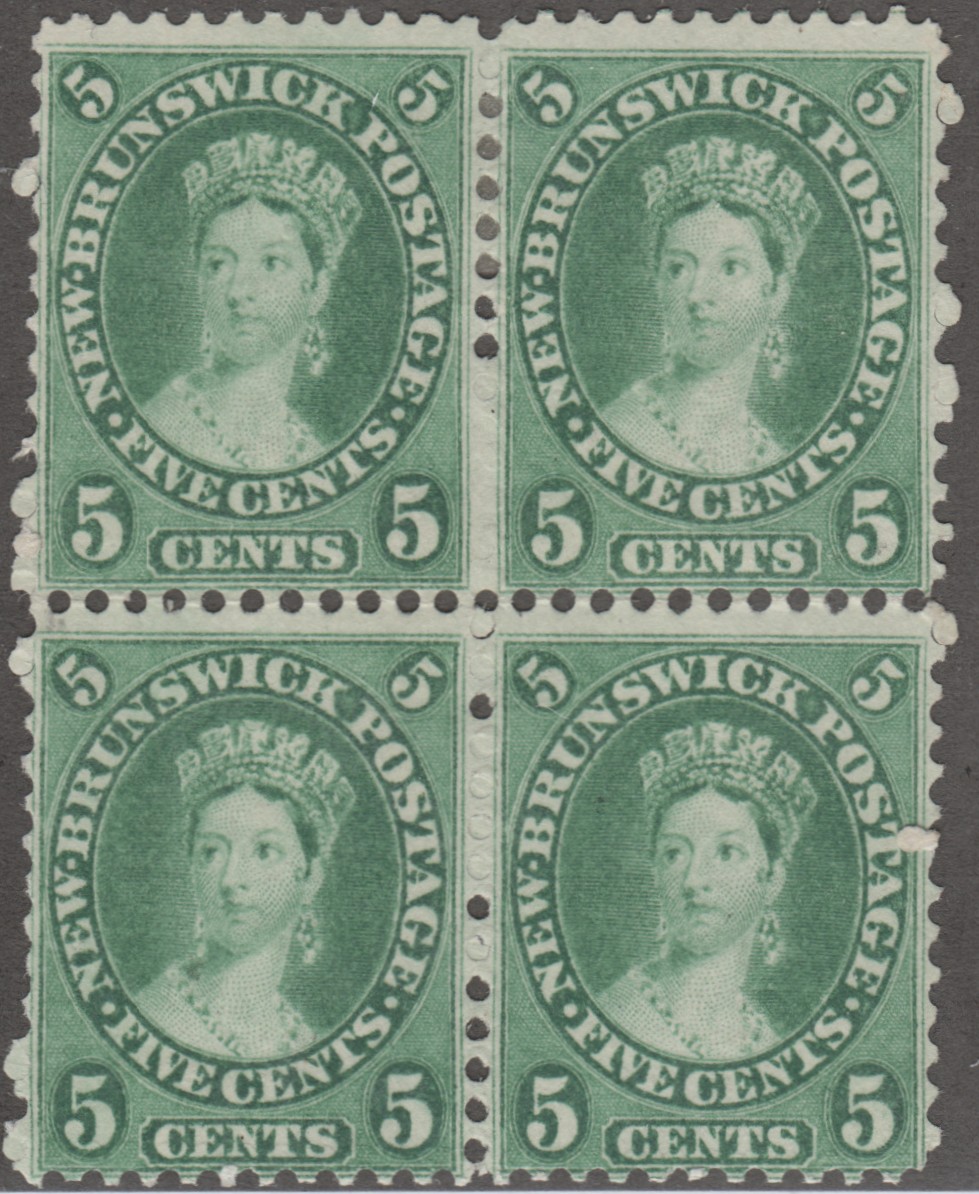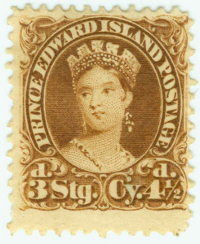
Discussion - Member to Member Sales - Research Center

Discussion - Member to Member Sales - Research Center


05:44:05pm
https://stamporama.com/discboard/disc_ma ...

Login to Like
this post

06:27:05pm
This article from Stamp Smarter is very good as well. I seems that the best way to do this is to measure the thickness of the stamp with a good set of micrometer calipers. Can anyone recommend what I should buy? There also seems to be colour differences and also wet printings seem to be more prone to offset marks on the back. I definitely need to do some research. Can anyone tell me a sure fire way to tell?
https://stampsmarter.org/learning/Manuf_ ...
EDIT: If measuring the paper thickness is foolproof please recommend a good set of calipers. There are many on Amazon and most are reasonably priced!

Login to Like
this post

10:17:59pm
Does anyone depend on the "flick test". I've spent some time flicking stamps and they all seem the same to me!! Maybe I just don't know how to flick! 

Login to Like
this post
I, also, seem to be "flick" impaired. 

Login to Like
this post
I find it pretty easy to differentiate by a frame width measurement.

Login to Like
this post
I agree with bigcreekdad. I have a caliper that will measure the paper thickness to the desired level. However, measuring the width of the stamp design is much easier for me. The wet printings shrunk a bit in the horizontal direction, making the dry printed stamps about 0.5mm wider than their wet counterparts. The difference is very small, so some magnification to amplify the difference might be needed. Here is a sample:


Login to Like
this post

12:35:59pm
Thanks to everyone for the information. I really understand the differences now! I think I'll order a got set of calipers soon and use that. The size difference is a real help as well as the difference in appearance of the stamps. The "flick test" really doesn't work for me!!

Login to Like
this post
I never did understand all that measurement and colo and thickness stuff. I did, however, figure it out after handling several thousand of them. It becomes pretty apparent after a while, just by the “feel” and look of them. I know that’s not very helpful, but experience handling them is the truest way.
Allen

Login to Like
this post

04:09:55pm
". I did, however, figure it out after handling several thousand of them. "
I agree that that would definitely be the best way but not practical for me since I don't buy lots of stamps like some of you do. I either buy on line or from my local dealer I've used since 1972. I'll have to go with size or thickness. Size is tricky since the catalogs don't tend to give sizes on a regular basis. You would really need to compare two stamps, one wet and one dry, to make this work. I'll have to combine several methods, thickness, size and the overall look of the stamp. I'll eventually figure it out!!

Login to Like
this post
I’ve used the flick test on US Large Banknote issues but haven’t heard about using it for other issues.
I’ll say it’s not very scientific, I have other ways to identify the Large Banknote issues.
Stampsmarter. Org discuss other ways to identify these issues along with the flick test.
I just reread your earlier post about Stampsmarter.

1 Member
likes this post.
Login to Like.
Unitrade is quite helpful on Canadian stamps.

Login to Like
this post
If you are going to measure paper thickness, you will need an fairly accurate device to see the small differences. The device that works very well for me is the SPI Dial Thickness Gauge, model number 13-151-6. I checked on the web and found a company named GoVets in Melbourne Beach, Florida that has a few on sale for US$65.00.



Login to Like
this post

09:22:50pm
Thanks Terry, I'll definitely check into it!

Login to Like
this post
This is my diabetic cat OBI! I think, therefore I am - I think! Descartes, sort of!
30 May 2024
05:44:05pm
I was trying to figure this out and ran into this older SoR thread that seems to be quite helpful!
https://stamporama.com/discboard/disc_ma ...

Login to Like
this post
This is my diabetic cat OBI! I think, therefore I am - I think! Descartes, sort of!
30 May 2024
06:27:05pm
re: Dry vs Wet printing
This article from Stamp Smarter is very good as well. I seems that the best way to do this is to measure the thickness of the stamp with a good set of micrometer calipers. Can anyone recommend what I should buy? There also seems to be colour differences and also wet printings seem to be more prone to offset marks on the back. I definitely need to do some research. Can anyone tell me a sure fire way to tell?
https://stampsmarter.org/learning/Manuf_ ...
EDIT: If measuring the paper thickness is foolproof please recommend a good set of calipers. There are many on Amazon and most are reasonably priced!

Login to Like
this post
This is my diabetic cat OBI! I think, therefore I am - I think! Descartes, sort of!
30 May 2024
10:17:59pm
re: Dry vs Wet printing
Does anyone depend on the "flick test". I've spent some time flicking stamps and they all seem the same to me!! Maybe I just don't know how to flick! 

Login to Like
this post

re: Dry vs Wet printing
I, also, seem to be "flick" impaired. 

Login to Like
this post

re: Dry vs Wet printing
I find it pretty easy to differentiate by a frame width measurement.

Login to Like
this post

re: Dry vs Wet printing
I agree with bigcreekdad. I have a caliper that will measure the paper thickness to the desired level. However, measuring the width of the stamp design is much easier for me. The wet printings shrunk a bit in the horizontal direction, making the dry printed stamps about 0.5mm wider than their wet counterparts. The difference is very small, so some magnification to amplify the difference might be needed. Here is a sample:


Login to Like
this post
This is my diabetic cat OBI! I think, therefore I am - I think! Descartes, sort of!
31 May 2024
12:35:59pm
re: Dry vs Wet printing
Thanks to everyone for the information. I really understand the differences now! I think I'll order a got set of calipers soon and use that. The size difference is a real help as well as the difference in appearance of the stamps. The "flick test" really doesn't work for me!!

Login to Like
this post

re: Dry vs Wet printing
I never did understand all that measurement and colo and thickness stuff. I did, however, figure it out after handling several thousand of them. It becomes pretty apparent after a while, just by the “feel” and look of them. I know that’s not very helpful, but experience handling them is the truest way.
Allen

Login to Like
this post
This is my diabetic cat OBI! I think, therefore I am - I think! Descartes, sort of!
31 May 2024
04:09:55pm
re: Dry vs Wet printing
". I did, however, figure it out after handling several thousand of them. "
I agree that that would definitely be the best way but not practical for me since I don't buy lots of stamps like some of you do. I either buy on line or from my local dealer I've used since 1972. I'll have to go with size or thickness. Size is tricky since the catalogs don't tend to give sizes on a regular basis. You would really need to compare two stamps, one wet and one dry, to make this work. I'll have to combine several methods, thickness, size and the overall look of the stamp. I'll eventually figure it out!!

Login to Like
this post

re: Dry vs Wet printing
I’ve used the flick test on US Large Banknote issues but haven’t heard about using it for other issues.
I’ll say it’s not very scientific, I have other ways to identify the Large Banknote issues.
Stampsmarter. Org discuss other ways to identify these issues along with the flick test.
I just reread your earlier post about Stampsmarter.

1 Member
likes this post.
Login to Like.

re: Dry vs Wet printing
Unitrade is quite helpful on Canadian stamps.

Login to Like
this post

re: Dry vs Wet printing
If you are going to measure paper thickness, you will need an fairly accurate device to see the small differences. The device that works very well for me is the SPI Dial Thickness Gauge, model number 13-151-6. I checked on the web and found a company named GoVets in Melbourne Beach, Florida that has a few on sale for US$65.00.



Login to Like
this post
This is my diabetic cat OBI! I think, therefore I am - I think! Descartes, sort of!
31 May 2024
09:22:50pm
re: Dry vs Wet printing
Thanks Terry, I'll definitely check into it!

Login to Like
this post

